It’s been nearly two weeks since I posted an update here on
my current main project- The wedding sword.
Last time round, I showed you that I was casting copper
ingots to be formed into the hilt parts for the sword.
Last week I cast the final parts and fitted them to the
tang.
Each of these copper parts was then hot forged into the final scroll forms of the hilt parts.
This was quite a challenge as copper behaves very differently to iron when hot. (It is a much better conductor of heat so a larger are of material will become soft as opposed to the controlled, short heats that are possible with iron.
On both pieces, the first scroll was easy as the opposite end was straight- allowing the piece to be gripped and worked. But once the first scroll was formed, the ease with which I was holding the work changed and I had to adapt my technique not to deform or damage the already finished scroll.
Much of the hot forging was done with a leather (rawhide) mallet to prevent unnecessary “dinging” of the surface. Hot copper is very, very soft.
I also cast the pommel with the tang hole already in position (rather than casting a solid block and punching and drifting to the correct proportions. This worked well and I will elect to use this method again.
Once all the hilt parts were forged and fitted, I turned my
attention to the wooden grip, which in this case is the heartwood of Yew.
Where the hand sits on the sword, for me, Is a special point
of consideration and deliberation. It is through the hand that the power and
presence of the object is ffelt. As my friend Jake Powning has said, the sword
is a power-object, forcing the person to acknowledge their actions- “[The Sword
is an object of] conscience, because you are directly responsible for what you
do with it.”
Whilst many would suggest burning a hole through the material,
I prefer to slice the wood into two halves. I do this by hand with a tenon saw
held in a vice. By holding the wood rather than the saw, I have more control
and the cut is straight and consistent.
Once two halves are made, the tang is marked out on onto the
blanks and a recess is carved allowing the both halves to be brought together
and glued. Once the glue has set, the handle maybe shaped to the desired form.
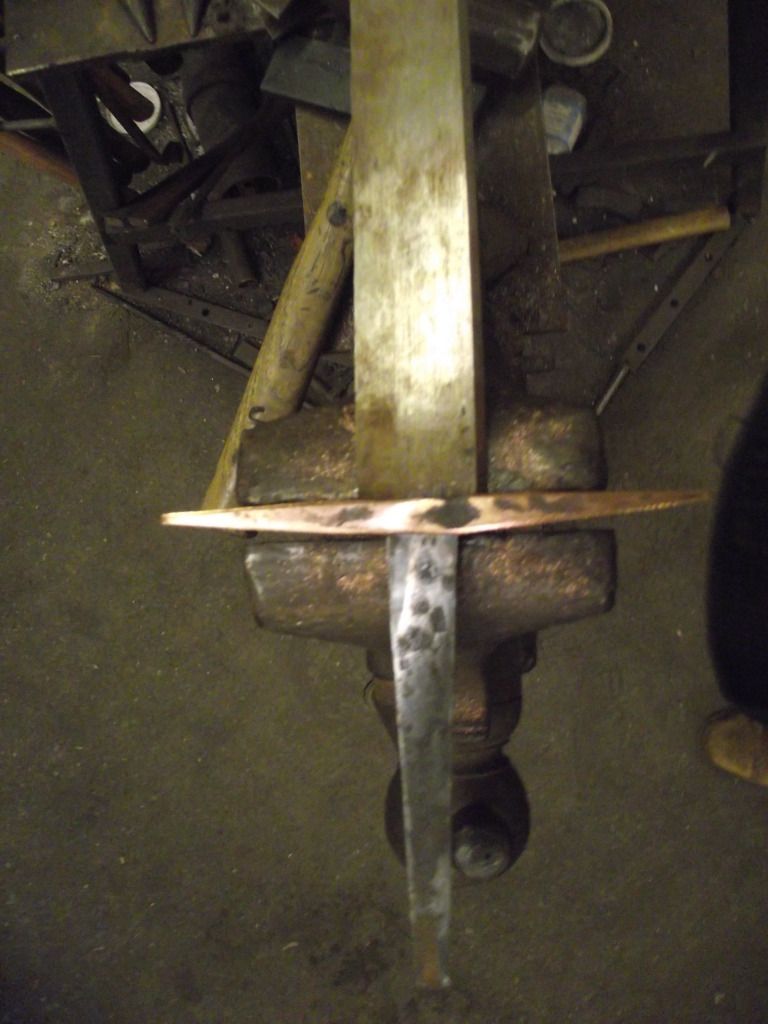
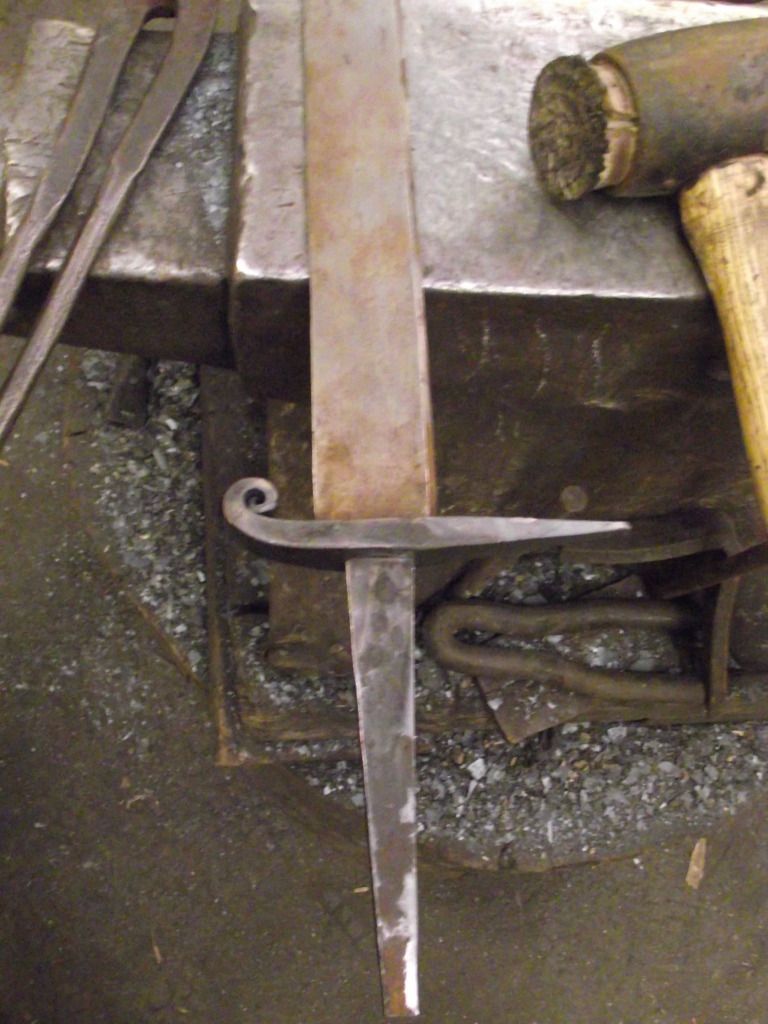
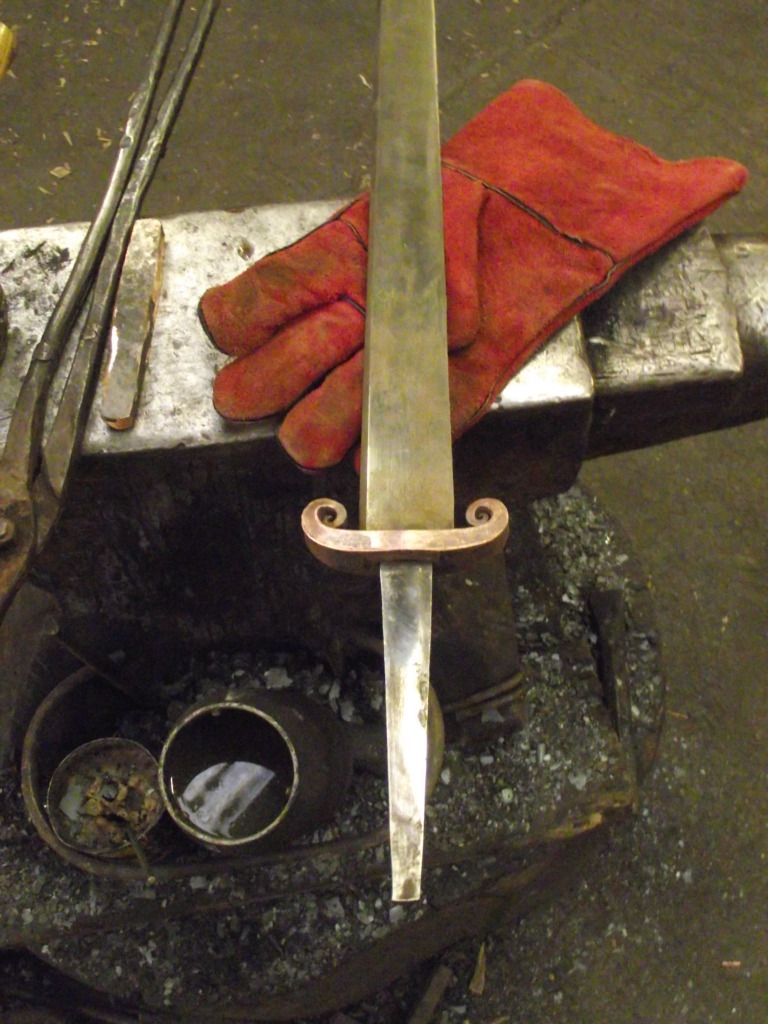
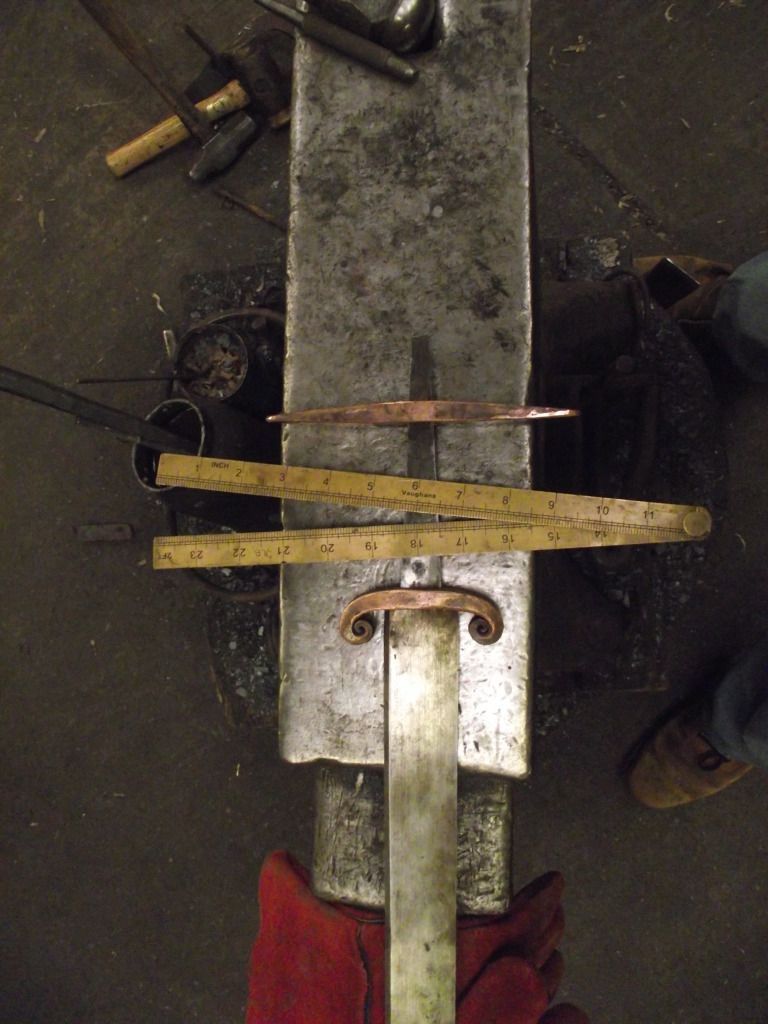
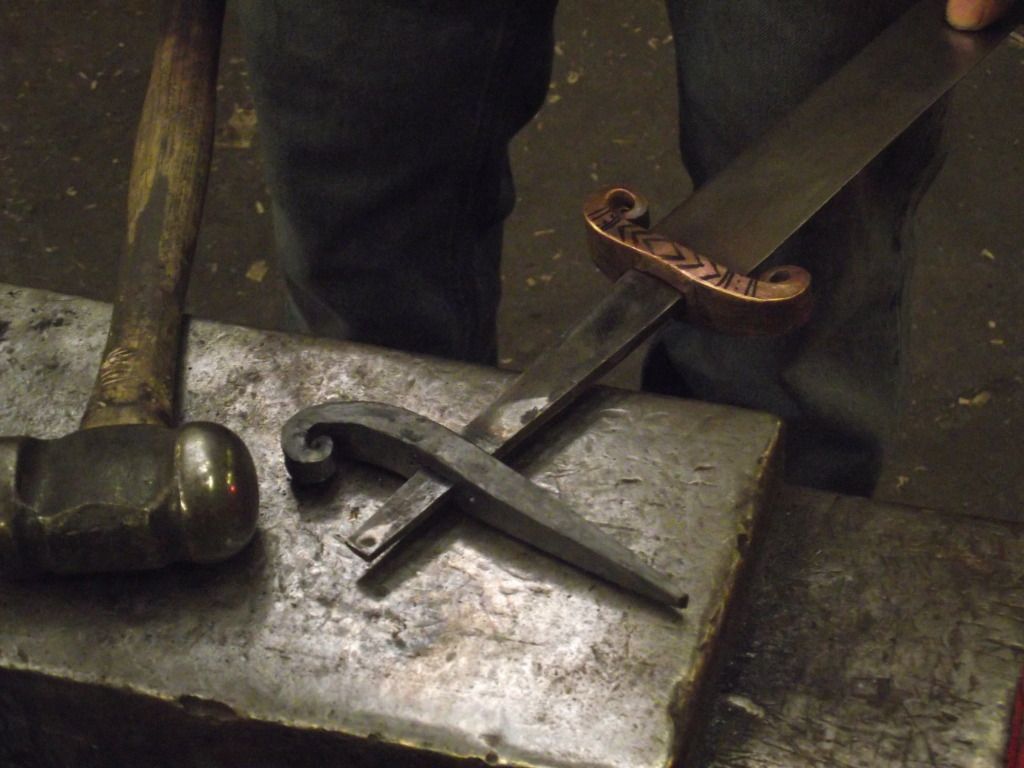
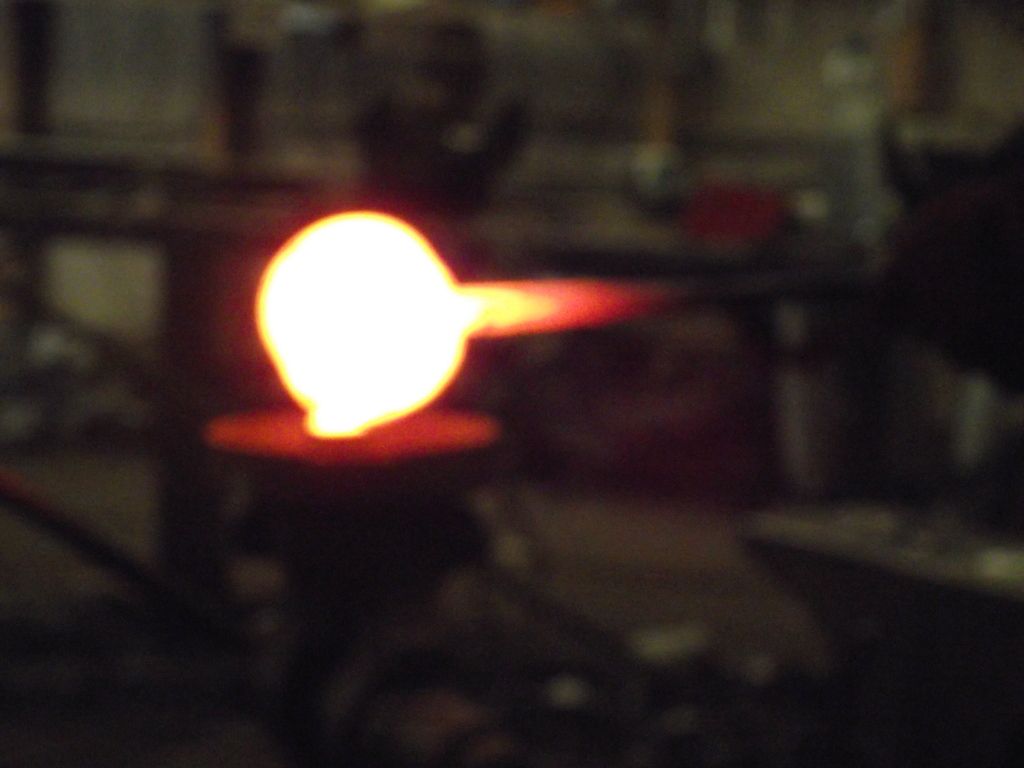
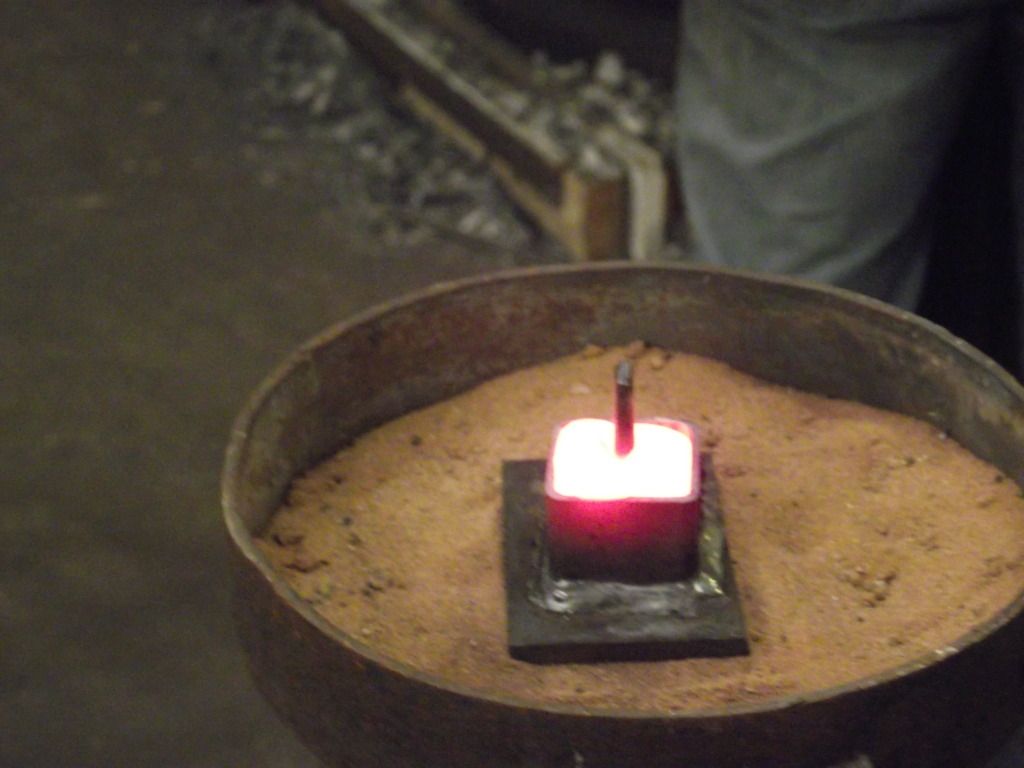

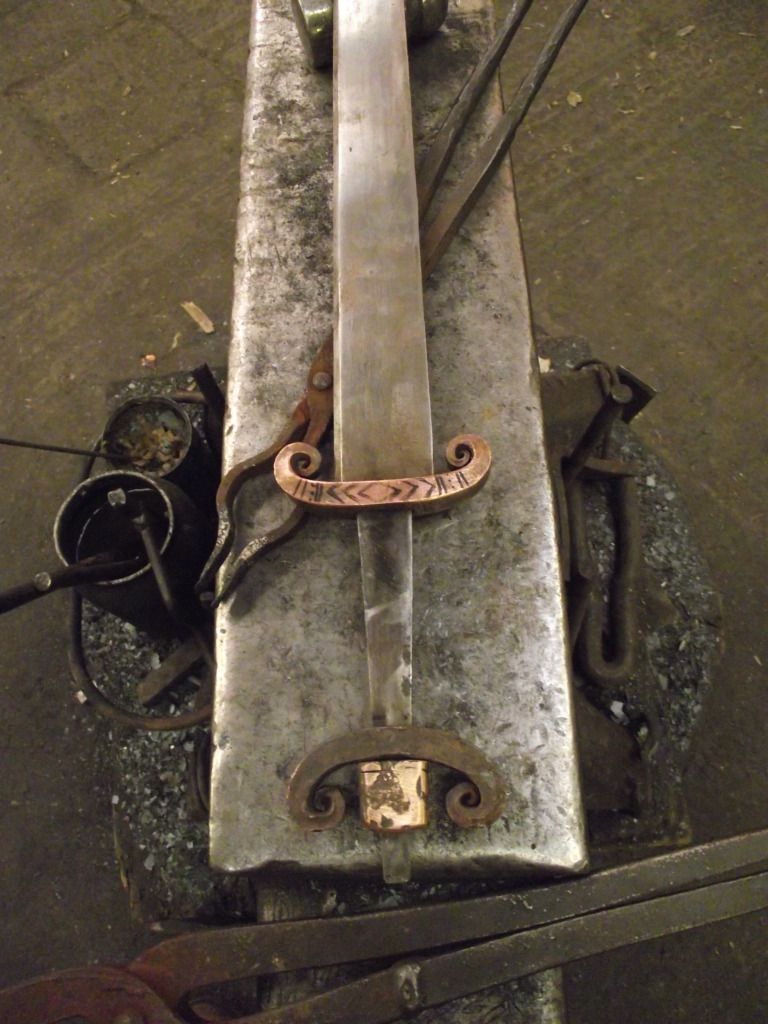
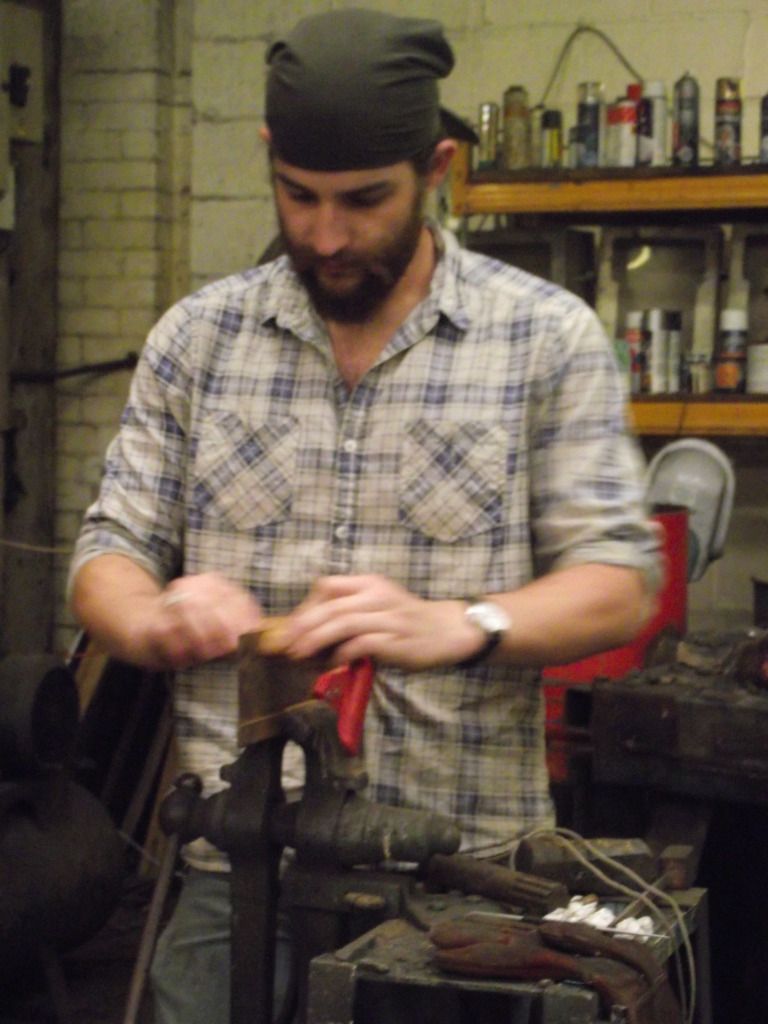
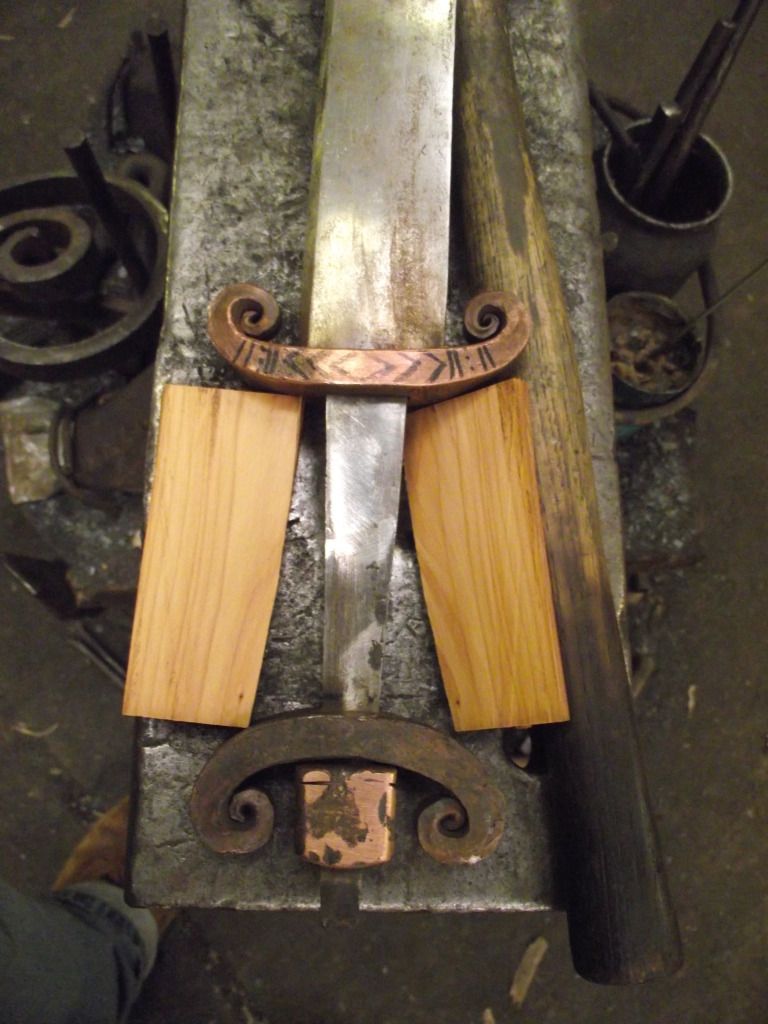
No comments:
Post a Comment